We would like to introduce you some objects of interest and beauties of Rhodes island, which you can comfortably reach with a car. The roads on Rhodes are predominantly good till very good.
Lindos :
Lindos (approx. 50 km from Rhodes-town) is one of the islands major tourist attractions.
The village has perfectly preserved its medieval character, with pebble-covered streets and whitewashed houses built on a slope just over the sea. A series of steps lead to the ancient Acropolis with its Doric Temple of Athena. In the village you can visit the Byzantine church covered with eighteenth century frescoes. In the recent years, some 15th century houses have been declared traditional buildings to be preserved and can be visited.
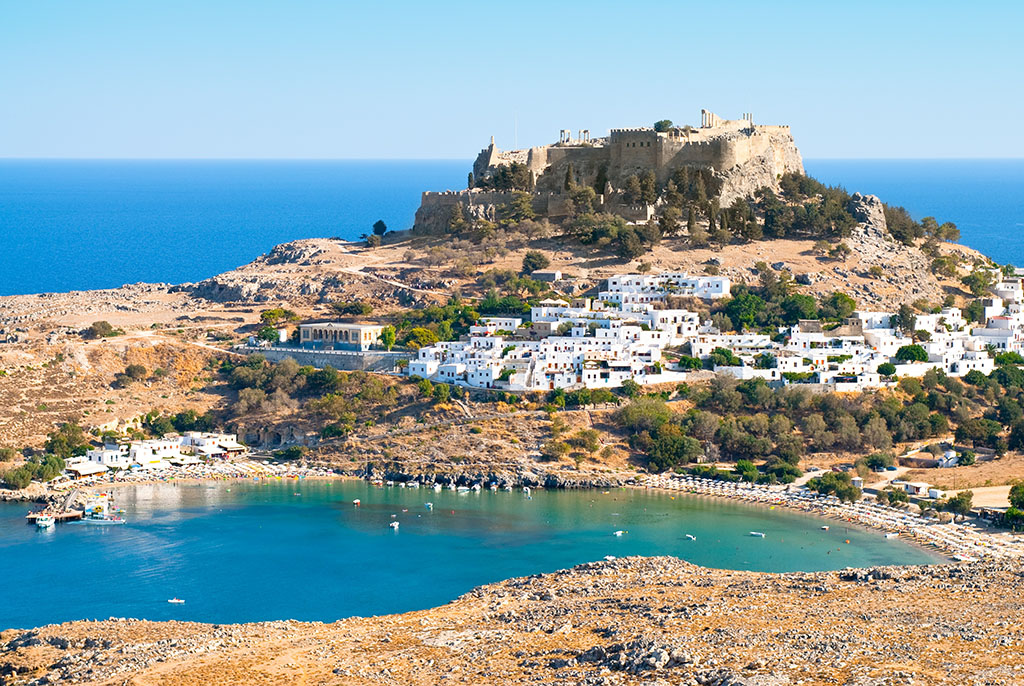
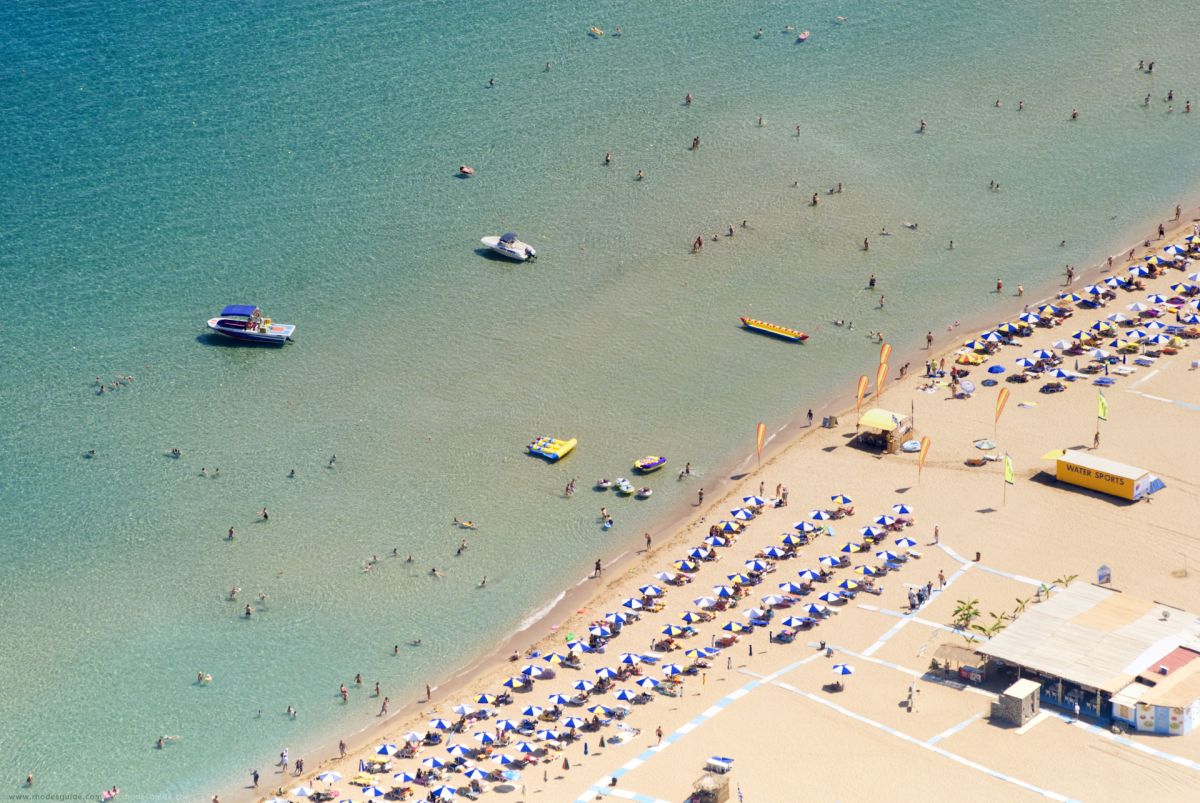
Tsambika beach
Tsambika beach is located approx. 25 km from Rhodes town and 1 1/2 km from the main road Rhodes – Lindos.
This beautiful and naturally landscaped beach, offers everything a visitor would want to have while on holiday
(crystal clear waters and a nice golden sandy beach).
Dont miss this fantastic beach!
On the main road Rhodes – Lindos also a road runs to the left leading to a hill crowned by the small church Kyra Tsambika.
After 3/4 of this way you must park the car.
The rest of the way you must walk.
For this effort you are compensated with a wonderful
Archangelos
Archangelos (30 km south of Rhodes-town) is the largest village of Rhodes, overlooked by a crumbling castle (1467) and surrounded by extensive orange and lemon plantations, olive groves and vineyards.
Apart from the fine agricultural products, the village is famous for its traditional carpets and its goat leather boots.
Other characteristics of the village are the striking colours used for the painting of the different elements of the houses.
Once you leave your car and make your way into the narrow side streets, you will understand why: bread is still baked in the old wood-fired ovens, skills and crafts of their grandfathers are kept alive, they marry in traditional ceremonies and still speak in their own distinctive idiom.
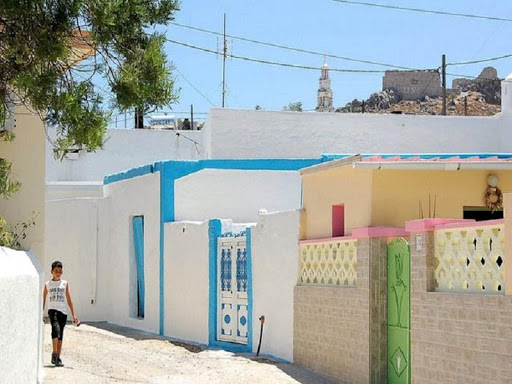
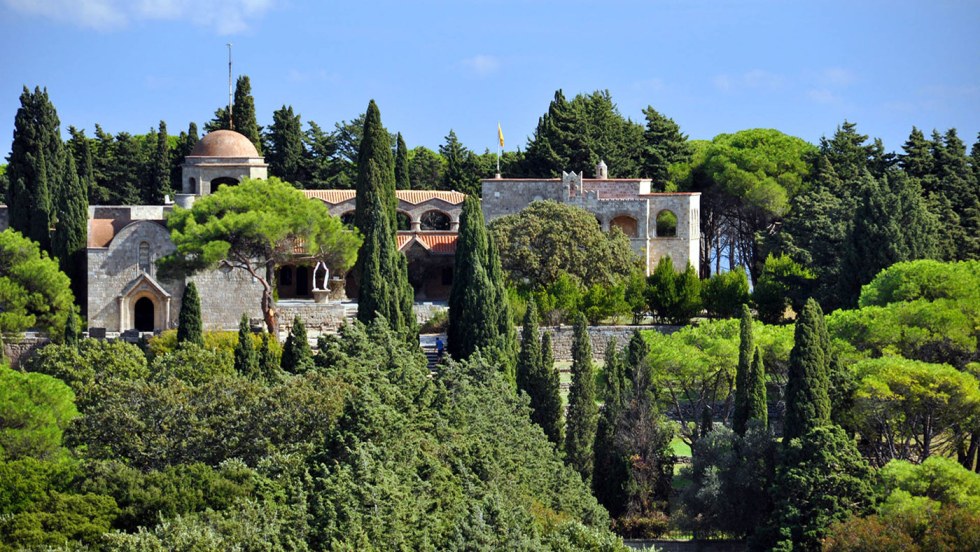
Filerimos
Filerimos is a hill, 270 meters high, planed with cypress and other trees, 15 km away from Rhodes-town.
The upper part of Filerimos is a large plateau and most of the buildings are found on the eastern side.
They include the foundations of a temple, an Early Christian basilica and a Byzantine church.
Italians restored this monastery. Along the right side of a path there are scenes of the Passions of Jesus.
This tiny thickly planed road leads to the western part of the hill, where an imposing cross stands in the middle of a small square.
Prassonissi
Prassonissi lies at the southern end of the island Rhodes. Prassonissi, which is actually an island, is connected to the main body of Rhodes by a long sandbank. The sea on the east side of the sandbank is calm; the sea on west side is rough. You can only reach this beach with a car or motorcycle. In front of the beach there are some restaurants and two small hotels. But you can eat also in the small village Kattavia with many taverns and restaurants (8 km from Prassonissi).
Approx. 3 km behind Lardos in a southerly direction lies the small Glystra beach. You can only reach this beach with a car or a motorcycle. The beach lies below the Coast Street directly behind a sharp bend. On this beach its very quiet. Sun beds and sunshades are available for hire. A small restaurant is located directly on the beach. This is only an example, because it gives in the south of the island many quiet beaches and bays which you can reach with a car comfortably.



The Medieval Town of rhodes – Mandraki harbour
The Medieval Town (or the old town) is a living monument. It is a well preserved centre where many Rhodians live and work.
The medieval town developed around a fortress that was most probably built after the earthquake of 515.
The Street of the Knights is the best-preserved street from the period of the Knights and leads uphill to the Grand Masters Palace.
The Chora to the south, with Socrates Street (the old market) with Suleimans mosque and the clock tower.
Hora was the area for the bourgeois.
One of the most frequented spots of the city is the ancient harbour – today called Mandraki harbour – with the statue of the male and the female deer at its entrance. Tradition tells us that this was where the famous Colossus of Rhodes, one of the seven wonders of the ancient world, stood.
On a long pier stand the three old windmills and at its northern end the Fortress of St. Nicholas with the lighthouse.
From the Mandraki harbour the small excursion ships depart for daily cruises to Lindos, Symi, Kallithea (for diving) and different beaches at the East Coast.
Valley of butterflies (Petaloudes.
This small part of Eden lies 25 km away from Rhodes-town.
A thickly planed valley with running waters, wooden bridges and lakes, make even the most demanding visitor short of words
in front of this unique sight and the feeling of tranquillity.
From July until September the valley gets filled up with thousands of butterflies, a sight that offers an even more enhancing view.
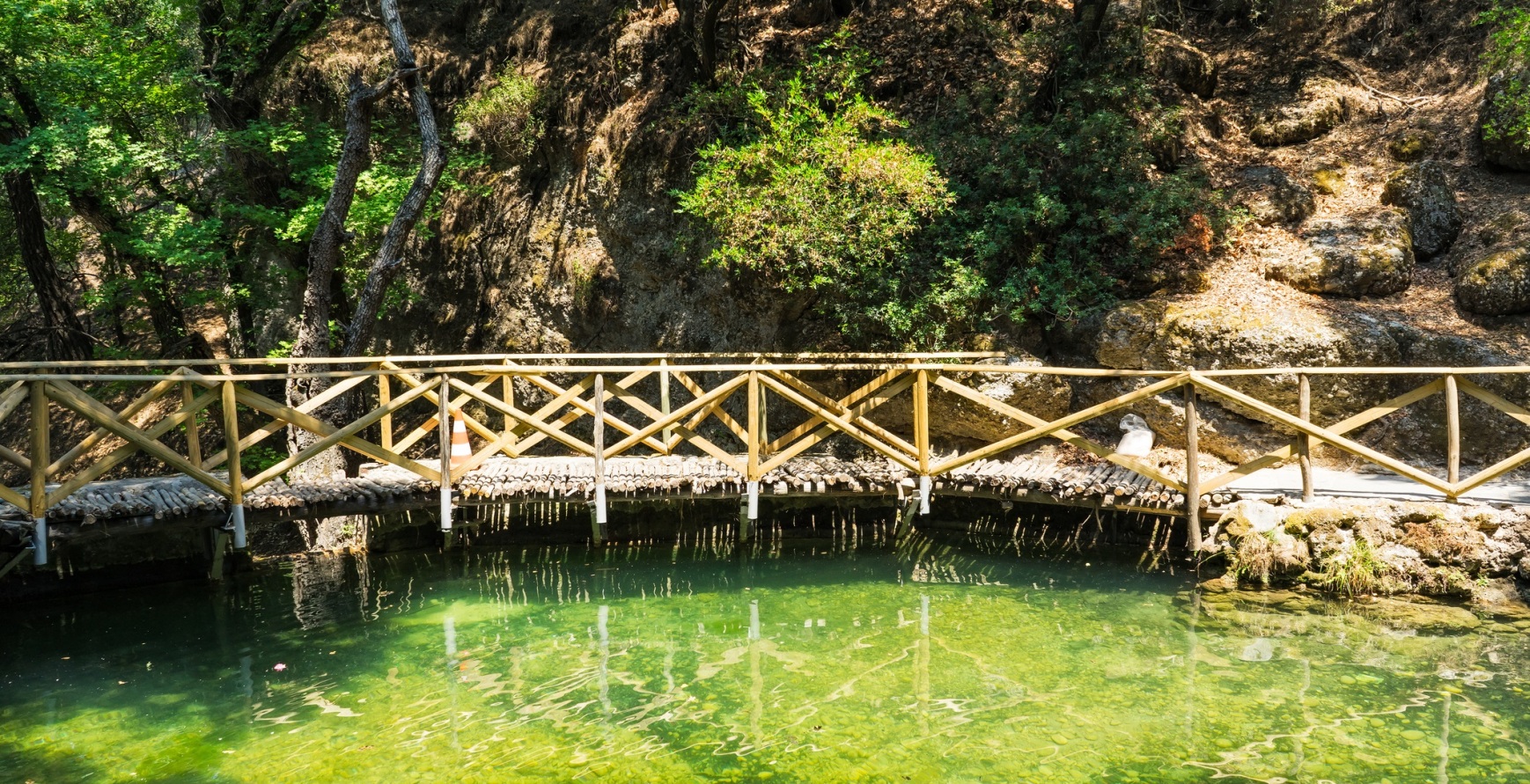
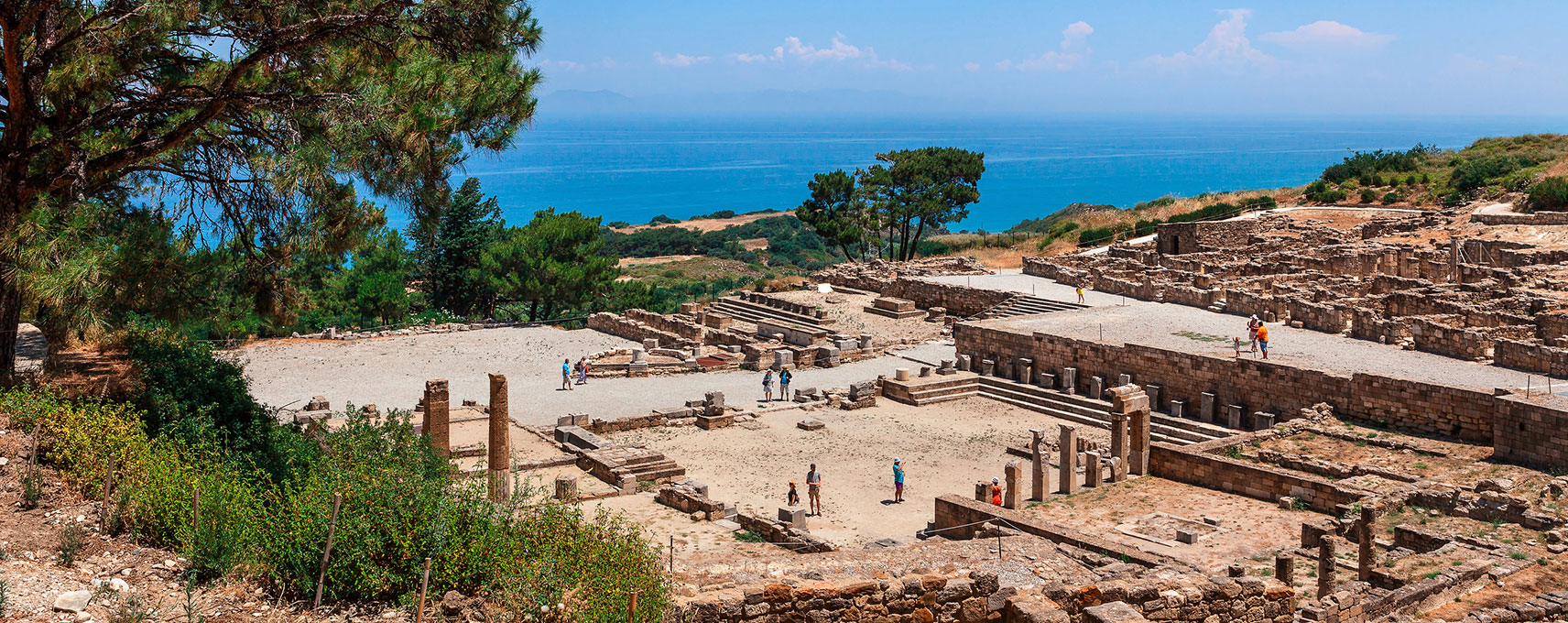
Kamiros
Kamiros (30 km Southwest of Rhodes-town) is one of the three major Doric cities that united in the 5th century BC to found the powerful city-state of Rhodes. Kamiros was largely a farming community with wine and oil as its main products.
The impressive remains are spread on a hillside with a view towards the sea.
Today, the oldest ruins of the city are dated from the Hellenistic Era. The ruins of the city include a market with a Dorian arch, the altar of an unknown god, a Doric temple and a square. On the top of the hill, you can see the acropolis, which was covered by a large northern arch (3rd century BC), built on a water-tank.